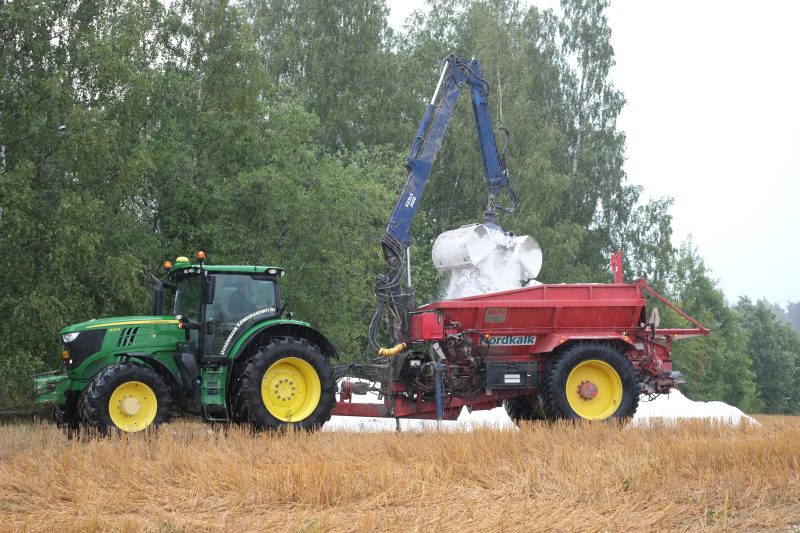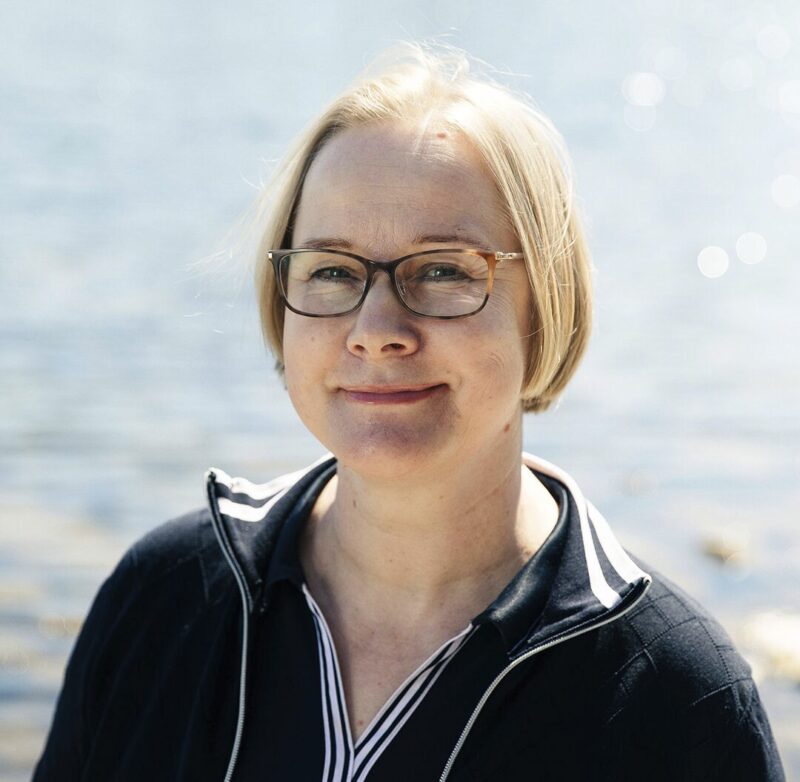The River Vantaa Gypsum Project
During the River Vantaa Gypsum Project, gypsum was spread across more than 3,600 hectares of arable land in the River Vantaa catchment area in 2018–2020. This treatment reduced nutrient loading and suspended solids immediately.


During the River Vantaa Gypsum Project, gypsum was spread across more than 3,600 hectares of arable land in the River Vantaa catchment area in 2018–2020. This treatment will reduce nutrient loading and suspended solids in the River Vantaa and the Gulf of Finland, thereby improving their ecological state and enhancing their recreational value. The River Vantaa is an important recreational area and trout river for many people living in the capital city region. Gypsum treatment proved to be an inexpensive way of protecting bodies of water, and will also be required in the future to reduce nutrient loading in the Baltic Sea.
By treating up to 3,600 hectares of fields with gypsum during 2018–2020, the project sought to reduce the amount of phosphorus ending up in the River Vantaa and Vanhakaupunki Bay by about ten tons, and the amount of suspended solids by about five thousand tons, over a five-year period. The project also acquired more data about the impact of gypsum treatment on water quality and fish stocks, and shared information about gypsum treatment as a method of water protection.
The River Vantaa Gypsum Project was implemented by the John Nurminen Foundation, the Water Protection Association of the River Vantaa and Helsinki Region, the University of Helsinki and the Finnish Environment Institute. It was funded by the Foundation’s private supporters, Euroclear, Yara, and the Ministry of the Environment as part of programmes relating to the management of water resources and marine environments in Finland and the Ministry’s policy package “The breakthrough of the circular economy and introduction of clean solutions”. Taking the donated gypsum into account, the project’s total budget was about EUR 1.4 million. Additional funding for gypsum treatment has been applied for via the Nutribute crowdfunding platform. Read more about the project’s achievements in the summary of the final report, which you can find here.
Gypsum treatment
The treatment involved spreading four tons of soil-improving gypsum per hectare of land. In this project, the gypsum was spread in the autumn after threshing. Gypsum (aka calcium sulphate) dissolves into arable land, where it improves the soil’s crumb structure and promotes adsorption (the binding of phosphorus to soil particles). This reduces erosion and the leaching of both phosphorus and organic carbon, which results in clearer run-off water and prevents the eutrophication of waterways. The bound phosphorus remains in the soil in a form that can be used by plants. The effect of gypsum treatment lasts for about five years.
The majority of the gypsum used in the project was recycled gypsum donated by Yara. This gypsum was generated as a by-product of phosphoric acid production. The project also included a small-scale natural gypsum pilot for about 80 hectares of land. 76 farms took part in the gypsum treatment. In addition to private farmers, two cities and one educational establishment were also involved.
Follow-up monitoring
The environmental impacts of the River Vantaa Gypsum Project were followed by monitoring the quality of run-off water and conducting fish stock studies. The Water Protection Association of the River Vantaa and Helsinki Region was responsible for carrying out these monitoring procedures. The effects of gypsum on phosphorus loading, suspended solids and the leaching of organic matter were studied in the River Lepsämä catchment area with the aid of water samples and automatic water quality monitoring. The change in phosphorus loading throughout the entire River Vantaa catchment area after gypsum treatment was assessed on the basis of results obtained from the monitoring area. The recent gypsum treatments will reduce phosphorus leaching into the River Vantaa (and thereby the Gulf of Finland) by about 9,500 kg, and suspended solids by about 4,100 tons, in the period 2018–2025.
The potential impacts on fish stocks were studied with the aid of electrofishing and by testing buried roe. In this study, gypsum treatment was not found to have any impact on fish stocks. Read more about Matias Hyrsky’s master’s thesis in the publications of the Water Protection Association of the River Vantaa (in Finnish).
Project phases
The River Vantaa Gypsum Project reduced nutrient leaching by treating more than 3,600 hectares of arable land with soil-improving gypsum. Gypsum treatment was also tested in the River Porvoo catchment area.
- The quantity and quality of run-off water was measured throughout the project at the River Lepsämä measuring station. Gypsum was found to reduce phosphorus loading and suspended solids during the mild and rainy weather of early 2020, which constituted prime conditions for loading.
- Matias Hyrsky’s master’s thesis, which was based on the project’s fish stock study, was published in the publications of the Water Protection Association of the River Vantaa and Helsinki Region.
- In 2018, a total of 1,070 hectares of land along the River Vantaa were treated with gypsum (and 73 hectares in Porvoo). More than 2,120 hectares were treated in 2019 and 420 hectares in 2020.
- In 2020, the spreading of natural gypsum was tested in fields belonging to four organic farmers.
- A photography competition was organised for primary school pupils in autumn 2019.
- The project organised several briefings for farmers, as well as field-side events for stakeholders and the media. Watch the gypsum promises made by participating politicians in autumn 2019 on our YouTube channel (in Finnish).
- Yara donated all of the gypsum required for gypsum treatments in autumn 2019 and 2020.
- Euroclear donated EUR 25,000 to the River Vantaa Gypsum Project on its anniversary.
- Porvoo Water financed gypsum treatment along the River Porvoo in order to neutralise its own nutrient footprint by supporting the project.
- A “Save the River Vantaa” crowdfunding campaign was launched for the project in order to collect donations from citizens.
- The project ended in December 2020 with a webinar and the publication of the final report. Read the summary of the final report here.
Materials related to the project
In cooperation
